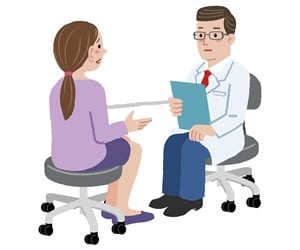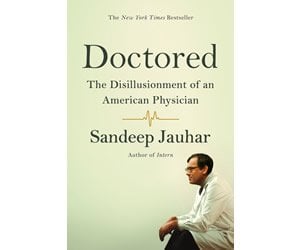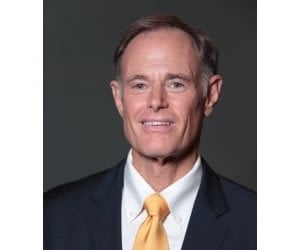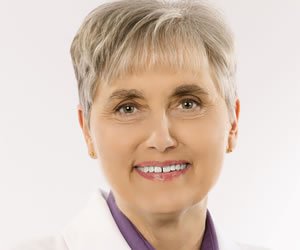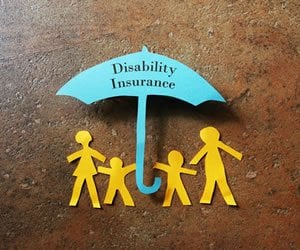It might actually come as a surprise to many would-be medical students that gender is an issue that still affects those who are training for a career as a doctor. After all, there are more women in medicine than ever before–and certain areas of practice have become largely female-dominated. Despite this, however, gender attitudes can color nearly every aspect of medical education.
Women in Medicine: Close to Parity – at Least In Numbers
Statistically, if you just look at the numbers, the participation of women in medicine has indeed come a long way. According to the AAMC, as of 2013, of the 20,055 students who were accepted into medical schools across the country, the split between men and women was almost evenly divided: 53% male and 47% female. It is important to look at these stats in terms of their historical context in order to truly appreciate them.
healthcare
Physician Employment Contracts Part II: The Story Continues
Make sure to check out Part I here!
Today’s article takes a closer look at several key terms in employment contracts that can have a significant impact on a new physician – compensation methods, incentive compensation and outside work or “moonlighting”. Building on our first article that examined termination provisions, non-compete clauses, professional liability insurance and indemnification, we will identify key issues in evaluating compensation models and moonlighting and outline some of the questions to consider before signing on the dotted line.
Junior Doctor Stress and What Can be Done about It
Junior doctors [and residents in the US] do a valuable and sometimes life-saving job for patients. They are the future in medicine and can bring enthusiasm and fresh ideas into the profession. Despite the importance of their role to society, junior doctors have sky rocketing stress levels and many have an appalling state of mental health.
The Shocking Suicide Rate Among Doctors
It is totally shocking that in the 21st century, so many bright young doctors fall prey to depression and around 400 US physicians intentionally end their own lives annually. This means that every year in America, a million patients lose their doctor to suicide. The chance of dying by suicide is greatly increased for those in the medical profession compared with ‘lay’ people. For instance, male doctors have a 70% increased risk of dying as a result of suicide, when comparing the death rates with men from the general population. One of the reasons there are more completed suicides – ironically – may be as a result of doctor training. Doctors know the human body intimately. They know about drug dosages, they know more about the effects of drugs on the body. They know how to save a life and because of this, how to take one. A determined doctor can calculate a fatal drug dose expertly or know where to cut that would be catastrophic. They also have access to powerful, death dealing drugs that are only available on prescription to the rest of the population. This may be why there are so many successful doctor suicides each year.
A Guide to a Successful Gap Year
It wasn’t so very long ago that the typical medical student went straight from high school to a premedical program and then onto medical schools itself. This traditional pathway, however, is not so traditional anymore. The question of a gap year is one which comes up more and more frequently nowadays–and it is also one which can cause aspiring medical students a lot of anxiety as they make the decision about whether to take time off from academia when the undergraduate work is finished.
This article covers different aspects of the gap year, including the reasons why students take it, the fact that is it actually becoming more popular among pre-med students and different opportunities that students can take advantage of during this year off.
Why isn’t learning about public health a larger part of becoming a doctor?
Chronic conditions, such as Type II diabetes and hypertension, account for seven in 10 deaths in the United States each year. And by some estimates, public health factors, such as the physical environment we live in, socioeconomic status and ability to access health services, determine 90% of our health. Biomedical sciences and actual medical care – the stuff doctors do – determine the remaining 10%.
Clinical medicine can treat patients when they are sick, but public health provides an opportunity to prevent disease and poor health. But too often, medical students don’t get to learn about public health, or how to use it when they become doctors. That means many of today’s students aren’t learning about health care in a broader context.
Increasing Access to Healthcare in America
The advent of the Affordable Care Act was meant, in part, to help to increase the access that all Americans have to healthcare providers. However, while this has meant that a larger number of families now have health insurance, there is still a long ways to go before equitable access to healthcare is achieved.For medical students who will be coming into practice in the near future, an understanding of this issue and why it is important is a critical beginning to producing new physicians that are aware of the problem and are willing to be both proactive and creative when it comes to finding solutions to it. This article covers health care disparity and why it is important, as well as practical solutions to help close the gap of access to medical care in America.
What You Should Know: Talking to Parents about their Obese Children
According to the Center for Disease Control, childhood obesity is reaching what some are calling … Read more
What You Should Know: Talking to Your Patients About Their Mental Health
Even student doctors who have not yet completed all of their medical training have probably realized that awkward, difficult or delicate conversations are part and parcel of a physician’s practice, and for a number of different reasons. Few conversations you will likely to have with your patients can feel more uncomfortable–for patient and doctor both–than those involving a patient’s mental health. Despite energetic advocacy for the mentally ill in recent decades, the stigma of mental illness remains and many patients may feel embarrassed, upset, or ashamed to discuss these issues with their healthcare providers. A doctor who is comfortable with this topic and can put their patient as ease, however, can more easily screen patients for mental health disorders and, more importantly, get them referrals and contact with community resources that many of them so desperately need.
But how do you start this conversation?
Book Review–Doctored: The Disillusionment of an American Physician, by Dr. Sandeep Jauhar
“It is our obligation to remove the biases that stand in the way of good medicine. We need to assure no consideration of economic self-interest will prevent us from giving our patients the safest, most effective, and most economically responsible health care possible.” So spoke the president of the American College of Cardiology to a group of inductees in 2005. In the audience sat many young doctors, including Dr. Sandeep Jauhar, a New York cardiologist struggling with many aspects of the American healthcare system. The convocation speech is filled with platitudes such as this one, and virtually no doctor, especially at the outset of his/her training, would disagree with these sentiments. The struggle, writes Jauhar, is to actually make convocation speeches come to life. How do we keep these sentiments from just being banal and clichéd statements and instead enact them, creating a real impact in the way we practice medicine? This question and the effects of our failure to answer form a central theme in Jauhar’s memoir Doctored.
Why Student Doctors Should Care About Climate Change
Updated October 28, 2021. The article was updated to correct minor grammatical errors and formatting … Read more
20 Questions: David Perlmutter, MD, FACN, ABIHM – Neurologist
Neurologist David Perlmutter, Fellow of the American College of Nutrition and member of the American Board of Integrative Holistic Medicine, is an associate professor at the University of Miami Miller School of Medicine. Perlmutter received a degree in biology from Lafayette College (1976) and a Doctor of Medicine from University of Miami School of Medicine (1981), where he was a Leonard G. Rowntree Research Award winner. He completed residencies in general surgery at Mt. Sinai Hospital in Miami Beach (1981-1982), and both neurosurgery (1982-1983) and neurology (1983-1986) at University of Miami School of Medicine.
Student Loan Forgiveness for Medical Students
Many medical students cheerfully expect to be earning a generous income as they begin their medical practice. But while it is true that that, according to the Medical Economics website that in 2014, 7 of the 10 top-paying jobs were in the medical profession, the issue of course is far more complicated than that. The American Association of Medical Colleges estimates that a four-year medical education at a private school today will cost around $278,455 dollars while a public one runs only slightly below that at $208,868. And the average medical student will be around $180,000 in debt at the time of their graduation. Around 20% will have debt in excess of $250,000.
These numbers can seem staggering. Fortunately, there are programs available to medical students which not only get them out from this monumental debt, but help underserved communities across the country and improve access to quality medical care for some very vulnerable patient populations.
The Right Time to Lose a Patient
Republished with permission from here. Although there is really never a right time to die … Read more
What You Should Know: Lies in the Patient-Doctor Relationship
What You Should Know is an ongoing series covering a range of informational topics relevant to current and future healthcare professionals.
It happens to every medical student sooner or later – the realization that their patient has lied to them. Especially for students, who are just beginning to gain clinical experience, this realization can come as a shock. A sense of betrayal, anger or even the desire for retribution can set in, all of which can be damaging to the doctor-patient relationship.
These emotions aside, it might help student doctors dealing with the nature of this reality to understand where deception enters into the therapeutic relationship – as well as how and why people lie in a clinical setting and what the doctor can do about it.
20 Questions: Terry L. Wahls, MD – Internal Medicine
Terry Wahls, MD, is a clinical professor of medicine at the University of Iowa, where she teaches internal medicine residents, sees patients in the traumatic brain injury clinic and conducts clinical trials. In addition, she’s director of the Extended Care and Rehab Service Line at the Veteran Affairs Iowa City Health Care System. She received a bachelor’s degree in fine arts from Drake University in Des Moines (1976), a Doctor of Medicine from University of Iowa in Iowa City (1982), and an MBA from University of St. Thomas in Minneapolis (2001). Dr. Wahls completed a residency in obstetrics and gynecology at Barnes Hospital, Washington University in St. Louis, as well as a residency in internal medicine at University of Iowa Hospitals & Clinics.
What You Should Know: The Pros and Cons of Medical Marijuana
What You Should Know is an ongoing series covering a range of informational topics relevant to current and future healthcare professionals.
The numbers alone make it a significant issue: as of 2015, 23 states and the District of Columbia have legalized the use of medical marijuana – and 9 more states are currently working on legislation to do the same. Two more states – Washington and Colorado – have gone so far as to legalize its recreational use. It is likely, therefore, that medical students today will feel the effects of medical marijuana use when they go into practice for themselves.
Medical – and recreational – marijuana use is a complex issue with medical, political, and social implications. Below are evidence-based arguments for and against this use to give student doctors the opportunity to understand the finer points of this controversy.
The Importance of Disability Insurance for the Young Physician
The thrill and responsibility of holding someone’s life in your hands, the ability to act under pressure, and the satisfaction of doing good in the world—these are among the qualities that attract people to the medical profession. In a culture that’s quickly diminishing the value of established professions, there’s still a universal appeal to becoming a doctor.This doesn’t mean seeking a career in medicine is without its obstacles. The importance of a thorough education—at least four graduate years—cannot be understated. Add in the time it takes to complete an internship and a residency, and it’s easy to see why a medical path can be too daunting for many. On average, it takes about 11 years for a medical student to become an independent doctor. If students begin medical school in their 20s, they won’t begin to see patients as a physician until they’re in their 30s. Add to that an average price tag of $166,000 in student loans for medical school, and even the most gung-ho medical students begin to balk. Suffice it to say, a career in the medical field is a huge time and financial investment.
What You Should Know: Connecting With Pediatric Patients
What You Should Know is an ongoing series covering a range of informational topics relevant to current and future healthcare professionals.
Even for student doctors who are in training to be pediatricians or specialists in pediatric health, connecting meaningfully with these small patients can sometimes be difficult. However, this connection is necessary to establish if a doctor’s goal is to give their patient the best care possible.
It is helpful, then, to take a look at what experts say about how doctors can connect to their pediatric patients.
The Art and Science of Narrative Medicine
Many medical students, even those with a background in the liberal arts, may have a hard time conceptualizing the role that the humanities–in particular, the art of the narrative–may have to play in clinical practice. However, a relatively new theory and practice of medicine, called narrative medicine, is beginning to take root and contains elements of both medical and language arts.
What is Narrative Medicine?
The phrase “narrative medicine” was coined by Dr. Rita Charon, one of the founders of this movement, which began to develop in the 1990’s in response to the perception of detachment and over-professionalism in medical practice. Dr. Charon wanted to explore new ways that medical practice could become more humanized and emotive– and lead to greater satisfaction with the clinical relationship for both doctors and their patients. In her definitive article, entitled “Narrative Medicine: a Model for Empathy, Reflection, Profession and Trust” which appeared in JAMA in 2001, Charon introduces her readers to this new concept by noting that “adopting methods such as close reading of literature and reflective writing allows narrative medicine to examine and illuminate four of medicine’s critical narrative situations: the physician and patient, physician and self, physician and colleagues and physician and society…By bridging the divide that separates physicians from patients, themselves, colleagues and society, narrative medicine offers fresh approaches for reflective, empathic and nourishing medical care.”
On The Shoulders of Giants: Tips for Aspiring Female Surgeons
While there were many engaging sessions held at the 2015 UC Davis Pre-Health Conference, a few stood out for being exceptionally inspiring. Dr. Lisa Lattanza’s lecture, “How to Be a Successful Female Surgeon”, was one of these standouts.
This isn’t surprising, considering Dr. Lattanza’s pedigree. The chief of Hand, Elbow & Upper Extremity Surgery at UCSF Medical Center, she is known both for her surgical skills and her inexhaustible efforts to encourage and mentor the next generation of female surgeons. She is the president and co-founder of The Perry Initiative, a Bay-area-based foundation which provides educational and experiential opportunities for young women (primarily high-school and early-college-aged) interested in orthopedic surgery – a project which recently earned her the prestigious Jefferson Award for public service.








